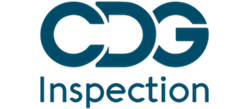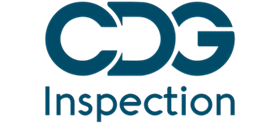Introduction:
Cross-contamination is a significant concern in the pharmaceutical and biopharmaceutical industry, as it can compromise the safety, efficacy, and quality of medicinal products. Shared facilities, where different products are manufactured in close proximity, present a heightened risk of cross-contamination. The European Union Good Manufacturing Practice (EU GMP) regulations are designed to ensure the quality and safety of pharmaceutical products by establishing guidelines for manufacturing, quality control, and distribution. This paper delves into how EU GMP audits play a crucial role in ensuring compliance with the control of cross-contamination in shared facilities.
EU GMP Regulations and Cross-Contamination:
EU GMP regulations, detailed in EudraLex Volume 4, Chapter 3, address the prevention of cross-contamination in shared facilities. Cross-contamination occurs when a contaminant transfers from one product to another due to inadequate separation or containment measures. The primary objective of EU GMP regulations is to ensure that medicinal products are manufactured in a controlled environment with processes that minimize the risk of contamination and ensure product quality and patient safety.
Risk Assessment and Facility Design:
EU GMP audits focus on the risk assessment and facility design aspects related to cross-contamination control. Manufacturers are required to conduct thorough risk assessments to identify potential sources of contamination and assess their impact. Shared facilities must have appropriate segregation mechanisms, such as separate manufacturing suites and dedicated equipment, for products with differing potency and sensitivity levels. EU GMP audits evaluate the adequacy of risk assessments and the effectiveness of facility design in preventing cross-contamination.
Cleaning Validation:
Cleaning validation is a critical aspect of cross-contamination control. Manufacturers must establish and implement robust cleaning procedures to eliminate traces of one product before commencing the production of another. Cleaning validation involves testing surfaces and equipment to ensure that they are free from residues that could lead to cross-contamination. EU GMP audits assess the adequacy of cleaning validation procedures, including sampling methods, acceptance criteria, and documentation practices.
Personnel Training and Hygiene:
Human factors play a significant role in cross-contamination. Inadequate training or poor hygiene practices by personnel can lead to unintentional contamination. EU GMP audits examine whether manufacturers provide comprehensive training to employees regarding cross-contamination risks, hygiene practices, and proper gowning procedures. Auditors assess the effectiveness of training programs and whether employees demonstrate understanding and compliance with these practices.
Documentation and Recordkeeping:
Thorough documentation is crucial for demonstrating compliance with cross-contamination control measures. Manufacturers are required to maintain accurate and detailed records of manufacturing processes, cleaning procedures, equipment maintenance, and batch histories. EU GMP audits scrutinize these records to ensure that they provide a clear and traceable account of activities related to cross-contamination prevention. Any deviations or incidents must be documented and investigated, with corrective and preventive actions implemented as needed.
Change Control and Risk Management:
Changes in manufacturing processes, equipment, or products can impact cross-contamination risks. EU GMP regulations mandate a robust change control system that assesses the potential effects of changes on cross-contamination control. Auditors evaluate whether manufacturers have a well-defined change control process that includes risk assessment, approval procedures, and post-implementation verification. This process ensures that modifications are thoroughly assessed before being implemented to prevent unintended contamination.
Analytical Testing and Sampling:
Routine testing of products and surfaces is essential for detecting and preventing cross-contamination. EU GMP audits assess whether manufacturers conduct appropriate analytical testing to monitor for potential contaminants. This includes swab testing of equipment surfaces, environmental monitoring, and testing of final products. Auditors examine sampling procedures, testing methods, and the establishment of acceptable limits for contaminants.
Supplier Audits and Material Control:
Cross-contamination risks can extend beyond a manufacturing facility’s boundaries through raw materials and components supplied by external vendors. EU GMP audits require manufacturers to perform supplier audits to assess the quality and suitability of materials. Auditors review the processes manufacturers have in place to evaluate suppliers, including material specifications, testing procedures, and handling practices to prevent contamination.
Conclusion:
EU GMP audits play a pivotal role in ensuring compliance with the control of cross-contamination in shared facilities within the pharmaceutical industry. By evaluating risk assessments, facility design, cleaning validation, personnel training, documentation practices, change control, analytical testing, and supplier audits, these audits provide a comprehensive assessment of manufacturers’ efforts to prevent cross-contamination. Through a rigorous evaluation of these aspects, EU GMP audits contribute to maintaining the quality, safety, and efficacy of medicinal products and safeguarding patient health.





